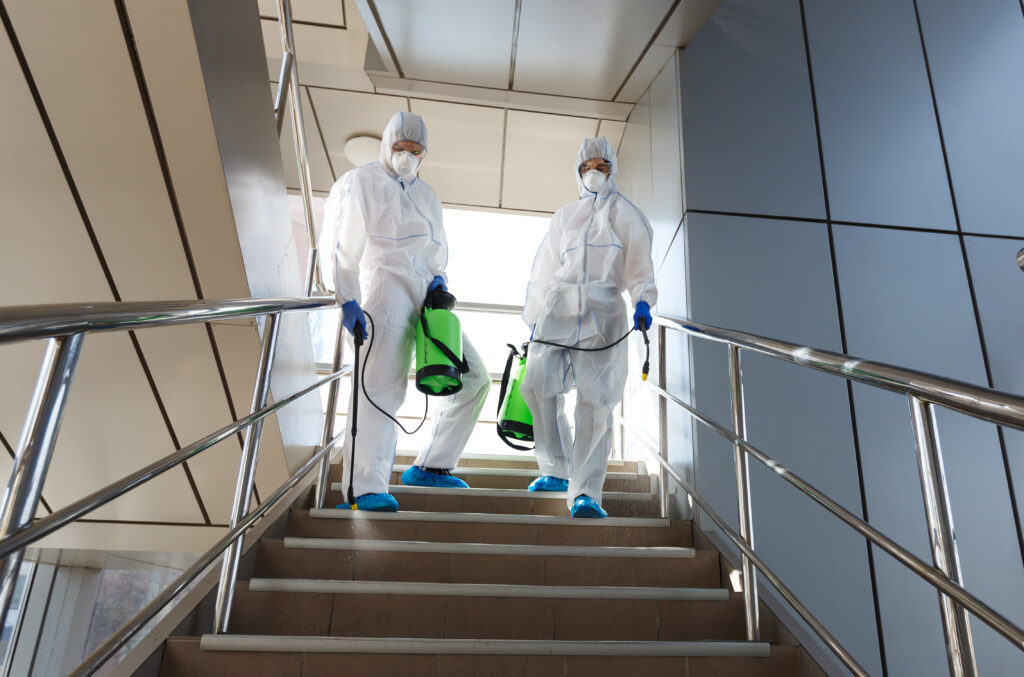Last Tuesday changed my understanding of hospital cleaning forever.
I was shadowing Maria, an environmental services specialist at Metro Medical, for a feature I was writing.
“Most people think we’re just janitors,” she said, snapping on her gloves with practiced precision.
“But we’re really frontline defenders.”
Watching her methodical room turnover after a C. diff patient’s discharge, I realized she wasn’t exaggerating.
Maria wasn’t just cleaning—she was executing a complex clinical intervention with the focus of a surgeon.
The Invisible War Zone

Let Us Disinfect Your Building, to Help Heal The Sick
We’ve all caught that hospital smell—the sharp bite of disinfectant that signals “medical facility.” What most of us don’t realize is that scent represents a constant battle against microscopic invaders that could derail a recovery or worse.
I used to think hospital infections were just bad luck. Then my father caught MRSA after a routine knee replacement. Three additional surgeries and months of recovery later, I became obsessed with understanding how something seemingly so clean could harbor such dangerous pathogens. The answer lies in what we can’t see—a hospital room that passes the visual inspection with flying colors might still harbor millions of potentially deadly microorganisms on a call button or bed rail.
From Housekeeping to Healthcare Heroes
Hospital cleaning has undergone a quiet revolution that few outside healthcare witness. Twenty years ago, environmental services staff (then called “housekeeping”) received minimal training and used largely the same products you’d find under your kitchen sink. Today’s specialists undergo extensive education in microbiology, infection transmission chains, and pathogen-specific protocols.
“Different bugs require different approaches,” explained Darren, an infection prevention director I interviewed. “We don’t just clean harder after an isolation case—we clean smarter, with specific chemistry and techniques proven to eliminate that particular organism.”
This science-based approach transforms what might seem like straightforward tasks into nuanced clinical procedures. The cleaner who knows to spend extra time on the bedrail’s underside that most hands touch but eyes rarely inspect isn’t just being thorough—they’re interrupting a transmission pathway that could otherwise lead to another infected patient.
The Strategic Science of Clean
The most effective infection prevention programs have abandoned the one-size-fits-all approach to cleaning in favor of risk-stratified protocols that deploy resources where they’ll have the greatest impact.
The Touch Point Revolution
“We mapped every surface patients and providers touch throughout a typical day,” shared Kimiko, who pioneered an infection reduction program that cut C. diff rates by 68% at her facility. “Then we redesigned our protocols to hit high-touch surfaces with appropriate frequency and disinfectants. The bed controller gets cleaned multiple times daily. The ceiling? Not so much.”
This targeted approach acknowledges that pathogens travel primarily on hands, making items like doorknobs, light switches, and bathroom fixtures critical control points. By focusing on these transmission highways, facilities maximize impact with limited resources.
Beyond the Visible
Perhaps the most significant shift in modern infection control is the recognition that clean doesn’t just mean looking clean. Many facilities now employ verification technologies that detect what human eyes can’t.
“We thought we were doing great until we started using ATP testing,” confessed Sam, an EVS director at a community hospital. “Surfaces that looked perfect were lighting up the meter. It completely changed our understanding of what thorough means.”
These objective measures—from ATP meters that detect biological residue to UV-reactive markers that reveal missed spots—have transformed cleaning from subjective judgment to measurable science.
The Human Element Remains Irreplaceable
For all the technological advances, infection prevention ultimately depends on people who care deeply about outcomes that most patients will never connect to their work. The most sophisticated UV robot can’t notice the used tissue that fell behind the visitor chair or recognize when a protocol needs adaptation for a unique situation.
What strikes me most after spending time with these professionals is their profound, often unrecognized impact. The environmental services specialist who takes that extra moment to disinfect an overlooked light switch may never know which infection they prevented or which life they saved.
“We’re the first line of defense and the last line of defense,” Maria told me as she completed her meticulous room cleaning. “But when we do our jobs perfectly, nobody notices anything at all.”
Perhaps that invisible success is the greatest testament to their essential role in patient care—not just cleaning rooms, but protecting vulnerable lives from threats too small to see but too dangerous to ignore.

